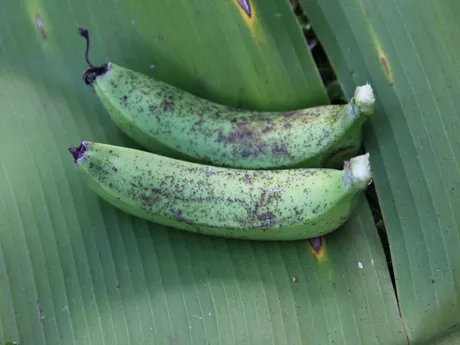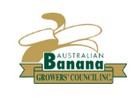The Australian Banana Growers’ Council (ABGC) says the successful eradication of banana freckle in the Northern Territory is a clear signal to markets not just locally, but around the world that the Northern Territory, and Australia as a whole, is free of the disease.
Banana freckle was detected in Cavendish bananas in NT in 2013. Today there was a formal declaration that Banana Freckle (Phyllosticta cavendishii) has been officially eradicated from Australia following the successful completion of the National Banana Freckle Eradication Program Response.
“The eradication process was completed in four phases over a 5 year period,” ABGC Chair Stephen Lowe said. “In the first, all banana plants found in six red zones were destroyed and movement of banana plants was restricted. This was followed by a ‘host-free’ period, for 6 months including one wet season where it was prohibited to grow any bananas. Phase 3 involved a controlled replanting of disease free sentinel banana plants which were monitored for banana freckle. During this time, people were permitted to buy banana plants again, but only from authorised outlets and with a permit. The final phase involved systematic surveillance and monitoring banana plants to prove the NT’s freedom of banana Freckle. It’s a real testament to everyone involved that such a large eradication process has been so successful.”

The Freckle Response has been the largest Emergency Plant Pest Response under the Plant Health Deed ever undertaken in Australia. Mr Lowe added that the impact of banana freckle spreading further afield could have greatly impacted the industry, particularly if it reached the major growing area in Far North Queensland.
“The disease could have significantly reduced production, affecting our growers’ ability to supply local fruit to Australian consumers,” he said. “On top of this, it would have affected our good standing internationally and export market opportunities.”
Although the Northern Territory growers have been supplying their local markets again for at least 12 months, there have also been restrictions on exporting plant material from the Territory, which will now be revisited. Mr Lowe says this official declaration is just one example of how industry and government can come together to maintain that famed ‘clean, green’ image for future generations.
“Australian banana growers are committed to maintaining good biosecurity, not only to protect their own farms, but their industry as a whole,” he said. “There are currently rigorous systems in place designed to ensure a constant supply of healthy, locally grown bananas to Australian consumers. Australian banana biosecurity is regarded as among the best in the world and something all stakeholders take very seriously. Aussie consumers love their Aussie bananas - and we love being able to grow them.”
Banana growers across the country funded half of the costs of the National Banana Freckle Eradication Response Program through a levy, and also contributed technical expertise and knowledge.
“The Territory’s commercial growers and backyard banana lovers have no doubt felt the brunt of this effort, Mr Lowe said. “We know it’s not easy to lose banana plants in any circumstance – be it natural disaster, disease or otherwise. We thank them for their part in ensuring our vibrant Australian industry is free from this potentially devastating disease. We also appreciate the dedication of the Northern Territory Department of Primary Industries for running the Eradication Program and the countless hours put in by the various government and industry representatives who contributed. Of course, commercial growers of all sizes across Australia have also contributed $12 million to this effort. The ABGC acknowledges that this is no small undertaking on their behalf and thanks them for their unwavering commitment to their industry.”
 For more information
For more information
Stephen Lowe
Australian Banana Growers' Council
Phone: +61 7 3278 4786
info@abgc.org.au
www.abgc.org.au
